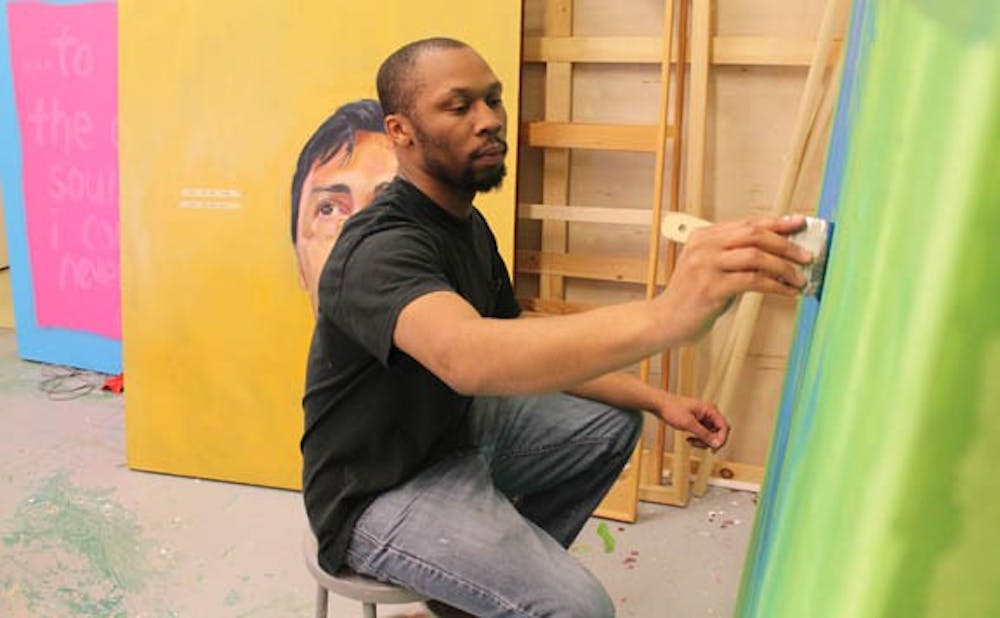As part of the art department’s Master of Fine Arts Exhibition Series’ “Your Turn to Burn” program, William Thomas’ paintings are on display this week in Hanes Art Center’s John and June Allcott Gallery.
Staff writer Elizabeth Tew spoke with Thomas about his inspiration for the show and what he hopes people will take away from it.
Daily Tar Heel: What is the inspiration behind your show?
William Thomas: What draws me to art now is thinking about the impact that images have on people on a regular basis in terms of developing a sense of the world around them.
I wanted to be able to add a dimensionality of my experience — to try to tease out the relationship between the images that are fabricated and the images we call reality.
I present questions about how identity and representation relates to visual culture.
I’m really interested in the ways that we describe people — what activities, what behaviors and what language do we describe people with as it relates to race and class.
DTH: What kind of pieces can viewers expect from the show?
WT: There is an image of a mouth. And there is a gold tooth and a black tooth and most of the other teeth are whitish.




